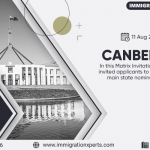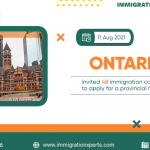In an increasingly interconnected world, international education continues to be a powerful force shaping the future of millions of students. Each year, thousands of aspiring learners apply for study visas, hoping to gain admission into globally recognized institutions.
As we progress through 2025, the landscape of study visa applications has seen notable changes driven by evolving immigration policies, shifting global demand, and the growing influence of technology. Understanding these trends is essential for students, parents, and education consultants alike.
In this blog, we dive deep into the key trends influencing study visa applications in 2025—and what prospective international students need to know to succeed.
10 Things You Need to Know About Study Visa Trends in 2025
-
Surge in Applications Post-Pandemic Recovery
After several years of pandemic-induced travel restrictions, study visa applications have witnessed a sharp rebound. Many students who deferred their plans due to COVID-19 are now applying en masse. Countries like Canada, Australia, the UK, and the US have seen a significant uptick in international student numbers, leading to increased competition and longer processing times.
Tip for Students: Apply early and ensure all documents are accurate and complete to avoid delays.
-
Popularity of STEM and AI-Driven Programs
Programs in STEM (Science, Technology, Engineering, and Mathematics)—especially those focused on Artificial Intelligence, Data Science, Cybersecurity, and Renewable Energy—are in high demand globally. Countries like the USA, Canada, Germany, and Ireland have rolled out initiatives to attract students in these fields, often offering faster visa processing and additional work rights post-graduation.
Why it matters: Governments are aligning education visa policies with labor market needs, creating incentives for students in high-demand sectors.
-
Focus on Regional and Rural Campuses
In countries like Australia and Canada, there is a growing push to encourage international students to study in regional or less urbanized areas. These regions offer additional points for permanent residency, better post-study work opportunities, and more affordable living costs.
Trend Insight: Visa applicants choosing regional campuses may benefit from faster approvals and stronger immigration pathways.
-
Increased Digitalization and AI in Visa Processing
Immigration departments across the globe are integrating AI and automated decision-making systems to speed up application processes. Tools powered by machine learning now assess risk profiles, verify documents, and filter incomplete applications, making the system more efficient but also more rigid.
Key Takeaway: Students must ensure document authenticity and compliance with all guidelines, as automated systems can flag inconsistencies quickly.
-
Stricter Financial Requirements and Proof of Funds
With rising inflation and concerns around overstaying, several countries have increased the minimum financial requirements for international students. Applicants must now show higher bank balances, sponsorship proof, and detailed financial plans to satisfy visa officers.
Example: Canada raised its cost-of-living requirement in 2024 to reflect actual student expenses, impacting GIC (Guaranteed Investment Certificate) limits and tuition coverage.
-
Mental Health and Well-being Now a Priority
More visa applications and institutional processes now include or encourage mental health support frameworks. Governments and universities recognize that international students often face unique challenges such as homesickness, academic pressure, and cultural shock.
Good News: Some countries now factor in institutional well-being resources during visa evaluations and university approvals.
-
Shift in Top Source and Destination Countries
India remains a leading source of international students, followed by China, Nigeria, and the Philippines. However, there is growing interest from countries in Latin America and Southeast Asia. On the destination side, Germany, the Netherlands, and Ireland are emerging as affordable alternatives to traditional countries like the US or UK due to their competitive tuition fees and English-taught programs.
-
Work Rights and PR Pathways Drive Choices
Post-study work rights are a key consideration for international students. Countries offering extended post-study work visas, like Canada’s PGWP (Post-Graduate Work Permit) or Australia’s Temporary Graduate Visa, are more attractive. Additionally, many students choose destinations based on permanent residency (PR) options after graduation.
Strategic Advice: Choose programs and regions aligned with in-demand occupations and PR-friendly policies.
-
Rise of Hybrid and Blended Learning Options
Although in-person learning has resumed, many institutions continue to offer hybrid models that combine online and on-campus instruction. This has led to a new wave of visa policies governing how much time students must spend physically on campus to retain their visa status.
-
Greater Role of Education Consultants and Legal Advisors
Due to evolving rules and increased scrutiny, more students are relying on professional visa consultants and legal experts to navigate the complexities of study visa applications. Trusted consultants also offer assistance with SOPs, documentation, interview preparation, and compliance.
Pro Tip: Always choose licensed or certified immigration experts to avoid visa rejections and fraud.
Conclusion:
The international education landscape is dynamic, and study visa trends reflect broader economic, political, and technological shifts. For aspiring students, staying informed about current visa policies, application requirements, and future immigration prospects is crucial to making the right decision. Whether you’re applying for your first student visa or planning a new academic journey, awareness of these 2025 trends can give you the edge you need.






